This very fun remake of 1995’s “Seiken Densetsu 3” has a light, classic tone and a story with no real surprises, but in a way that feels almost like gaming comfort food, with brisk pacing that doesn’t overstay its welcome. Keep reading for the full review!
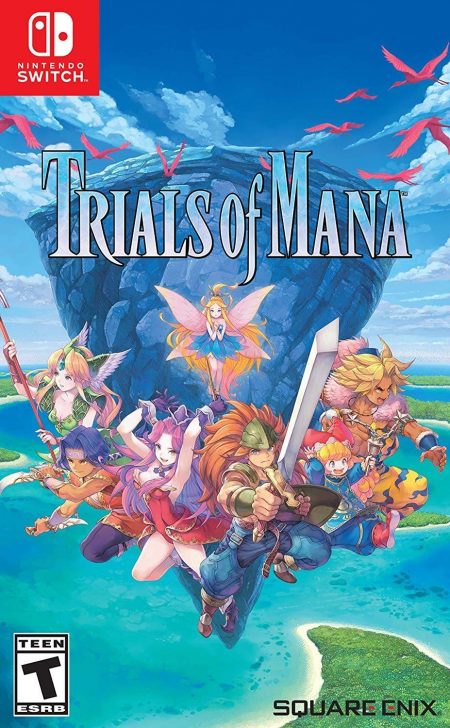
Game Details
Reviewer’s Playstyle: Two playthroughs, each including a postgame story, totaling about 50 hours. Did all side content encountered in the course of play and kept an eye out for it, but not a completionist.
Available on: Android, iOS, Nintendo Switch, PS 4, PS 5 through backward compatibility, Windows. My playthrough was done on a PS4 Slim.
In a hurry? Here’s the gist: This very fun remake of 1995’s Seiken Densetsu 3 encourages Action JRPG fans to dig into multiple playthroughs with a choice of player characters, with unique story paths and upgrade options. The game has a light, classic tone, and a story with no real surprises, but in a way that feels almost like gaming comfort food, with brisk pacing that doesn’t overstay its welcome.
Full Review
Classic games getting great remakes and reimaginings have been a trend lately (see Final Fantasy 7 and Resident Evil 2 and 3), and one I’ve been enjoying quite a bit. While I’d intended to play through 2020’s Trials of Mana, a remake of 1995’s Japan-only Seiken Densetsu 3, at its release, other things came up and took priority. However, when I did play it, it was just what I was looking for at the time: a snappily paced, replayable action RPG with a classic tone, characters and storyline, making up for what it lacks in deep plotting with execution and heart.
Character Customization
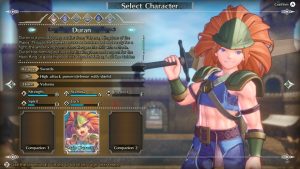
Choosing characters has important mechanical and storytelling implications
Trials of Mana’s multiple protagonists are at the heart of the game’s appeal. The game boasts six playable characters, but unlike most JRPGs where one serves as the main protagonist, and the rest are recruited into your party as you go, Trials gives a more limited selection in a more novel system.
At the beginning of a playthrough, the player selects one character from the six to be the main protagonist, and two more to be supporting characters. From there, the player receives a customized experience with an origin story episode for the chosen main character. The protagonist’s actions drive the main plot forward, followed by recruiting the other two characters in the first few hours of the game. Their origin episodes are also playable as flashbacks. The others will appear as NPCs of varying importance. For example, certain quests react to which characters are in your party and in what position, emphasizing or deemphasizing certain interactions, subplots and setting elements, especially as the player progresses further in the game.
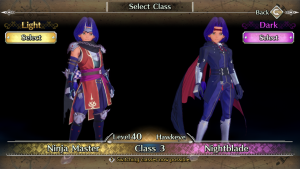
Class choices give you the opportunity to customize characters to your group and playstyle.
Adding further depth, at two points in the game (based on both character level and story progression), the player is given a choice of two upgrade paths for their character classes, altering the character’s look and unlocking a lot of new abilities, for a total of four final classes for the main game. The new-to-this-release postgame content adds two new final classes based on the first choice. This level of character customization was and remains rare for games with chosen protagonists, and means that just about any combination of characters can be used very effectively together, with smart choices ensuring that your group has whatever it needs. There are a few sentences of lore behind each class choice, though they don’t affect the story or character interactions any. While that might have been cool if done well, this is still a remake of a game from an era where that would not have been feasible, and, if done poorly, would dilute the other fun parts of the plot and characters.
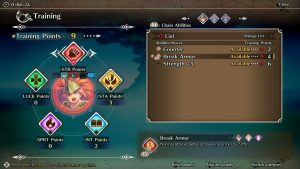
Level-ups are briskly timed, but many of the more interesting abilities and interactions require advanced classes and story progress.
Both of these elements contribute a great deal of replayability to the game, further assisted by its brisk pacing. The game’s combat and exploration systems favor quick action that feels inviting for short or long play sessions, punctuated with relatively frequent level-ups, to keep providing the player with some interesting choices. It can take a bit for things to open up enough to get real interesting regarding character skills, spells and such, introducing combat strategy beyond well-timed button presses- but in this case, I don’t think this level of easing in is necessarily a criticism, just an observation.
Issues with Party AI
One major point of criticism is the AI of party members, especially your damage-dealing characters. You can freely switch between which character you directly control—and you’ll want to be doing this fairly often. In my experience, characters focused on healing and support would usually do well enough left on their own outside of boss fights, but your damage-focused characters will often just stand there, or launch single attacks rather than combos—or, alternatively, they launch all their biggest spells and drain MP almost immediately. Outside of boss fights, the game is usually easy enough that this won’t kill you, but it is frustrating. The game’s unrefined combat AI can make regular fights more time-consuming than if you manually controlled the characters.
Game Difficulty
On that topic of difficulty, I found the Normal difficulty to be very approachable, though maybe a tad easy at moments. The Normal setting leads to some of the late-game bosses feeling a bit anticlimactic. You can resolve this by dedicating less time to getting gear and leveling your characters. This ease of play also allows the player to use characters and classes you want for the most part, rather than feeling like you have to use an optimized build. I’d encourage a wide range of gamers at different experience levels and aptitudes to try playing on Normal, which is, I think, as it should be.
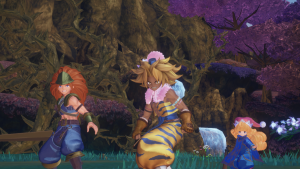
Kevin (center), as a dedicated damage dealer, suffers the most from the game’s weak party AI. Control him manually for his full effect!
postgame content
The postgame content is new to this release and is fun overall, though not particularly spectacular. It mostly consists of reworked areas from the main game, with more challenging enemies and a new villain. It’s pretty clear that the postgame content is intended as a bonus episode with some cool things, rather than an integral part of the experience, like with some JRPG postgames. You get two new classes, but no choice in the matter—one from each initial path for the character, which unifies some of the abilities from the third class options. Also, the story is pretty trivial. It’s just an excuse to get a little more time with your chosen characters. This makes the postgame drags a bit compared to the brisk pace of the main story, but it’s not too bad.
sound and graphics
The sound and graphics are enjoyable for the most part and definitely fit the feel of the story and game. The music is consistently good to great, and the graphics, while not technical marvels by any stretch, are effective and charming. The developers focused on good visual design and the use of color, over hardware-punishing graphic effects. The visuals appropriately look like a slightly modernized take on 90s fantasy anime and manga, which fits well with a remake of a game from that time.
Voice acting can really be a bit of a mixed bag. I played using the English dub, and I can tell there were some budget cuts for this. Most of the voice cast has relatively little credited experience, which is unusual for the main cast in a game from a major publisher. With all due respect to the talent of the performers, the dialogue sounds a little rough around the edges. Now, to some folks like myself who remember watching dubbed anime in the 90s, this game sounds like a throwback to that era. That factor probably furthered my enjoyment, compared to a possible cast with more known performers. But for other players, I could see this being a negative, particularly with certain characters in the party.
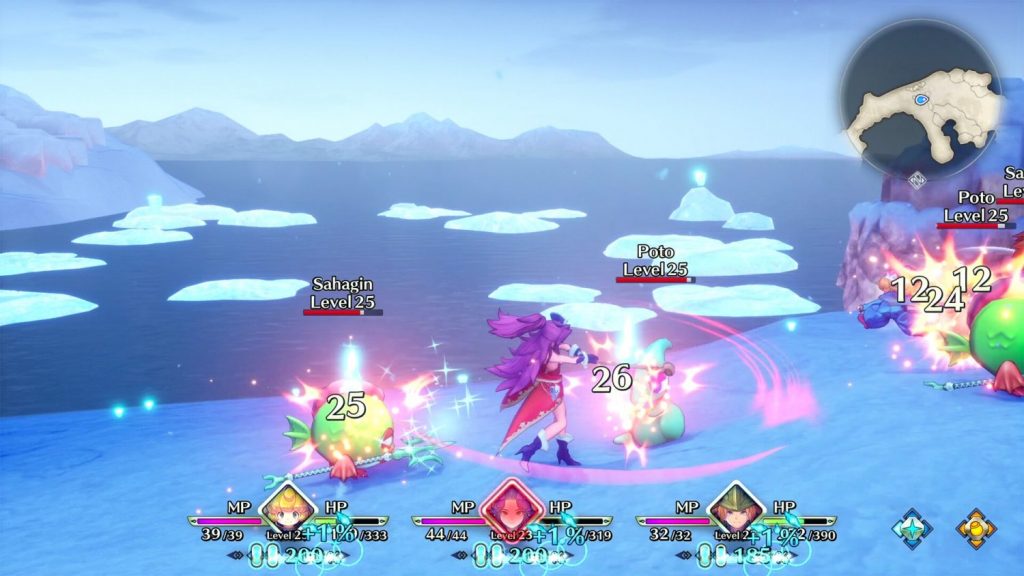
The game’s vivid color palette help keep the screen readable, even in combats with numerous participants.
FINAL THOUGHTS
Overall, my feelings about the game are quite positive. I have some nitpicks about poor party AI, a magic system that doesn’t thrive until midgame and some unremarkable boss fights. And there are some stylistic elements that may have mixed appeal to different audiences: a by-the-numbers story, corny voice acting and a modern take on a retro art style. But overall, if you’re after a classic JRPG storyline and fun (but not too involved) combat mechanics mixed with customizable party building and lots of replayability, Trials of Mana is an easy recommendation.
